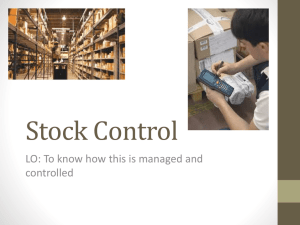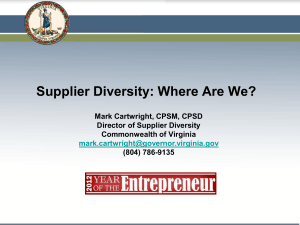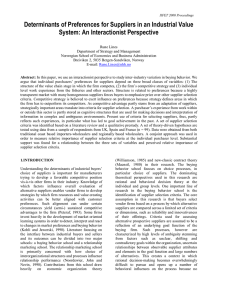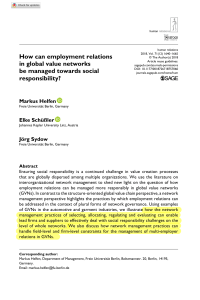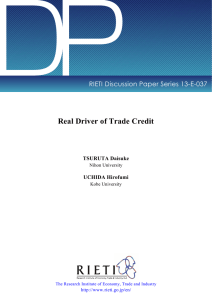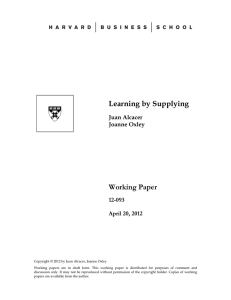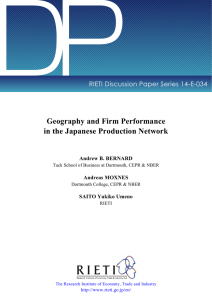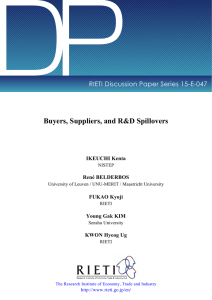Relationship between buyer and supplier in the Global value chain... * Yanuardi *
advertisement
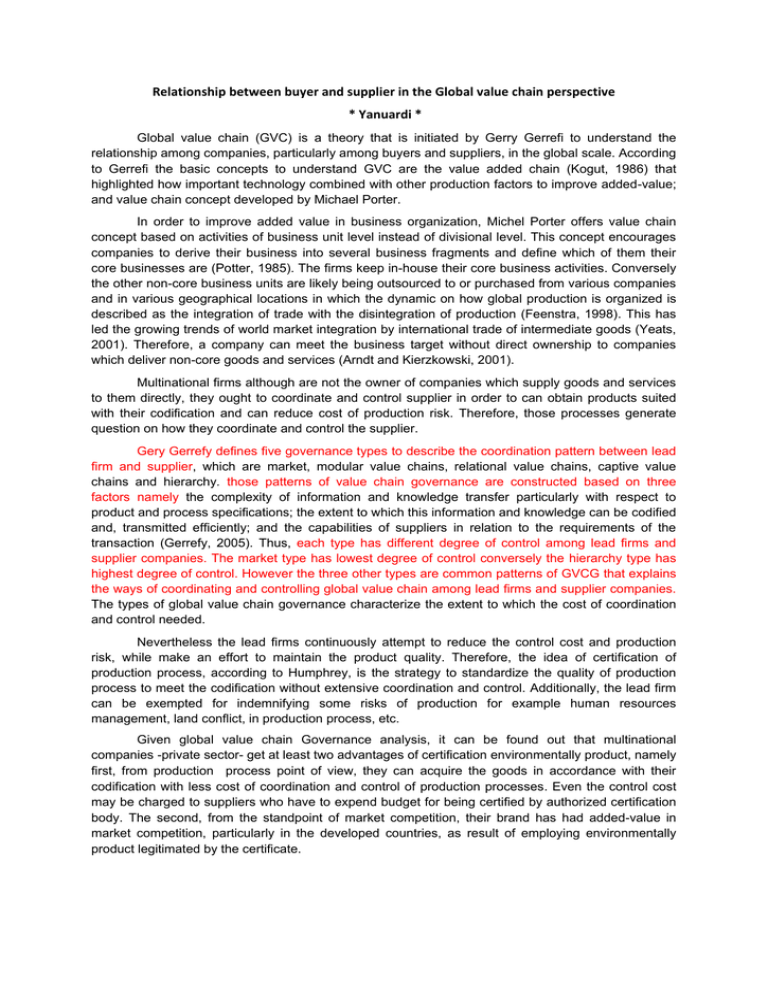
Relationship between buyer and supplier in the Global value chain perspective * Yanuardi * Global value chain (GVC) is a theory that is initiated by Gerry Gerrefi to understand the relationship among companies, particularly among buyers and suppliers, in the global scale. According to Gerrefi the basic concepts to understand GVC are the value added chain (Kogut, 1986) that highlighted how important technology combined with other production factors to improve added-value; and value chain concept developed by Michael Porter. In order to improve added value in business organization, Michel Porter offers value chain concept based on activities of business unit level instead of divisional level. This concept encourages companies to derive their business into several business fragments and define which of them their core businesses are (Potter, 1985). The firms keep in-house their core business activities. Conversely the other non-core business units are likely being outsourced to or purchased from various companies and in various geographical locations in which the dynamic on how global production is organized is described as the integration of trade with the disintegration of production (Feenstra, 1998). This has led the growing trends of world market integration by international trade of intermediate goods (Yeats, 2001). Therefore, a company can meet the business target without direct ownership to companies which deliver non-core goods and services (Arndt and Kierzkowski, 2001). Multinational firms although are not the owner of companies which supply goods and services to them directly, they ought to coordinate and control supplier in order to can obtain products suited with their codification and can reduce cost of production risk. Therefore, those processes generate question on how they coordinate and control the supplier. Gery Gerrefy defines five governance types to describe the coordination pattern between lead firm and supplier, which are market, modular value chains, relational value chains, captive value chains and hierarchy. those patterns of value chain governance are constructed based on three factors namely the complexity of information and knowledge transfer particularly with respect to product and process specifications; the extent to which this information and knowledge can be codified and, transmitted efficiently; and the capabilities of suppliers in relation to the requirements of the transaction (Gerrefy, 2005). Thus, each type has different degree of control among lead firms and supplier companies. The market type has lowest degree of control conversely the hierarchy type has highest degree of control. However the three other types are common patterns of GVCG that explains the ways of coordinating and controlling global value chain among lead firms and supplier companies. The types of global value chain governance characterize the extent to which the cost of coordination and control needed. Nevertheless the lead firms continuously attempt to reduce the control cost and production risk, while make an effort to maintain the product quality. Therefore, the idea of certification of production process, according to Humphrey, is the strategy to standardize the quality of production process to meet the codification without extensive coordination and control. Additionally, the lead firm can be exempted for indemnifying some risks of production for example human resources management, land conflict, in production process, etc. Given global value chain Governance analysis, it can be found out that multinational companies -private sector- get at least two advantages of certification environmentally product, namely first, from production process point of view, they can acquire the goods in accordance with their codification with less cost of coordination and control of production processes. Even the control cost may be charged to suppliers who have to expend budget for being certified by authorized certification body. The second, from the standpoint of market competition, their brand has had added-value in market competition, particularly in the developed countries, as result of employing environmentally product legitimated by the certificate.


